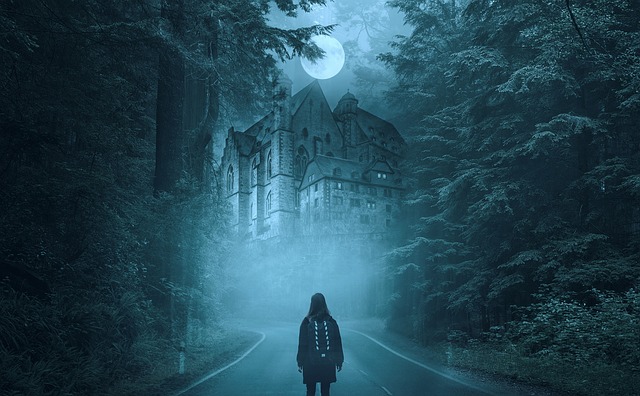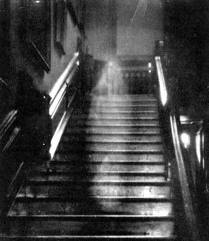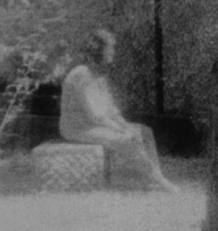 According to a home improvement company, 40 percent of millennials believe their home is haunted, which is why they decided to launch a special hotline to determine if it’s really a ghost or just some loose floorboards that need to be fixed.
According to a home improvement company, 40 percent of millennials believe their home is haunted, which is why they decided to launch a special hotline to determine if it’s really a ghost or just some loose floorboards that need to be fixed.According to Thumbtack, a technology company that helps people care for and improve their homes, spooked homeowners can call a dedicated Haunted Homes Hotline to rid their home of unwanted guests. Callers will be given guidance from a Thumbtack home specialist to determine if there’s really “something otherworldly” happening of if they just need some home maintenance.
The hotline will operate from October 24 through October 31 between 9am-6pm EDT for an evaluation of their problem. Callers will have the chance to win a discount on their next home project through Thumbtack with two lucky winners getting a chance to speak to a “renowned actress and producer” of spooky movies and TV shows, Sarah Michelle Geller.
"Working with Sarah Michelle Gellar was a no-brainer!" David Steckel, Thumbtack’s Home Care Expert, tells The Spruce. "Her years as a horror icon have made her an expert in the paranormal space, and we know she’ll be able to tell callers if something in their home seems truly off. Plus, as a homeowner herself, she’s seen and dealt with routine maintenance projects and can offer her perspective on what projects to prioritize."
The company conducted a survey of over 1,000 millennials which resulted in the following key findings:
• Almost half (46 percent) of millennials told us they have lost sleep over thinking their house might be haunted.
• The most common elements of a haunted house according to millennials are: doors closing unexpectedly (47 percent), noises coming from inside the walls (38 percent), flickering lights (34 percent), and creaky floors or stairs (28 percent).
• One-third (33 percent) of millennials have put off fixing ‘spooky’ attributes in their home, primarily because they didn’t want to spend the money or time on fixing them (24 percent).
• Nearly one-third of millennials (32 percent) have avoided going to a friend/family member’s house because they believed it was haunted.
• 21 percent of millennials have consulted a paranormal expert because they believed their home to be haunted.
As catchy as this gimmick may sound, authentic demonic infestations of a house are far more serious than what a home improvement expert or Hollywood director of spooky movies will be able to discern and resolve.
 Infestations are a form of demonic oppression that typically act on buildings. They include doors and windows that open and shut without any apparent cause; lights, televisions and electronic devices that turn on and off without any human intervention; the sound of footsteps; vibrations; mysterious voices or cries; rapping sound on the walls; black shadows that float or glide along floors, walls, or ceilings; strong and revolting odors; insect invasions.
Infestations are a form of demonic oppression that typically act on buildings. They include doors and windows that open and shut without any apparent cause; lights, televisions and electronic devices that turn on and off without any human intervention; the sound of footsteps; vibrations; mysterious voices or cries; rapping sound on the walls; black shadows that float or glide along floors, walls, or ceilings; strong and revolting odors; insect invasions.
Hauntings are also a form of demonic infestation. Disembodied human souls are incapable of communicating with the natural world without the intervention of either a supernatural or preternatural power which is why the Church believes demons are likely behind the manifestations of “ghosts” or poltergeists in a house.
As Adam Blai reports, some of the most common types of alleged human spirit haunting cases involve suicide or murder victims. “One has to be careful because demons can take advantage of a known suicide or murder and pose as that person in that location. Also, the demon that helped encourage the murder or suicide could still be there,” he writes in his book, Possession, Exorcism, and Hauntings.
Hauntings are also known to occur in homes where the occupants tried to communicate with the spirits of the dead, an activity that gives demons a kind of license to manifest.
In addition to being mistaken for loose floorboards or creaky door hinges, other possible explanations for what appear to be ghostly manifestations include the presence of living or dead animals in the walls, poor wiring that causes electrical field disturbances, noises from broken appliances or vents, and self-induced hysteria from watching too many occult-oriented horror shows on television.
In an authentic haunting, a demon will often pick a particular person in the house to focus these manifestations upon in order to make it appear to other family members as if they’re imagining things.
 “They may scratch, bite, hit, molest and generally harm that person,” writes Adam Blai. “They may invade the dreams of that person, causing unusual repeating nightmares that have an explicitly demonic character. There will be the beginning of a wearing down process, usually including sleep deprivation.”
“They may scratch, bite, hit, molest and generally harm that person,” writes Adam Blai. “They may invade the dreams of that person, causing unusual repeating nightmares that have an explicitly demonic character. There will be the beginning of a wearing down process, usually including sleep deprivation.”
The presence of evil in a house can also manifest in the form of physical discomfort such as insomnia, headaches, or stomach aches, or even just a general feeling of malaise that only happens in that particular place and nowhere else.
Poltergeist activity also falls into the category of demonic infestation and involves the movement of objects from one place to the other without any visible form of intervention. The name itself means “noisy ghost” in German. They typically manifest by moving or throwing objects around a room, stones against a window, or as moving orbs of light.
As we read in the book, The Kingdom of the Occult, “If they [poltergeists] succeed in catching someone’s attention, they often speak to the targeted individual audibly or through digital records, Ouija boards, or automatic writing, crafting tales of tragedy and woe designed to foster sympathy in the hearts of listeners.”
Regardless of their sorry tales, poltergeists are demons masquerading as human souls. “Demons enjoy playing games with human beings, and they have had centuries to perfect their technique.”
Any caller who is experiencing a genuine infestation will not be able to resolve their situation without the aid of a priest who may, in serious cases, need to exorcise the premises with the permission of a local bishop.
Thus far, we do not know of any hotline, including the one launched by Thumbtack, that is equipped to deal with authentic home infestations. This company might be better off sticking to home repairs.
© All Rights Reserved, Living His Life Abundantly®/Women of Grace® http://www.womenofgrace.com
